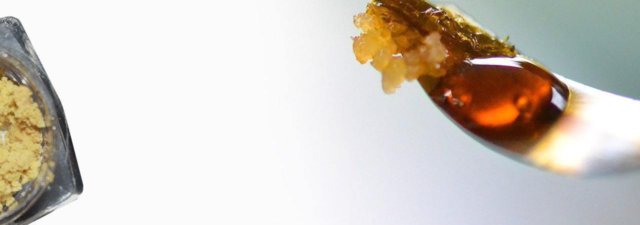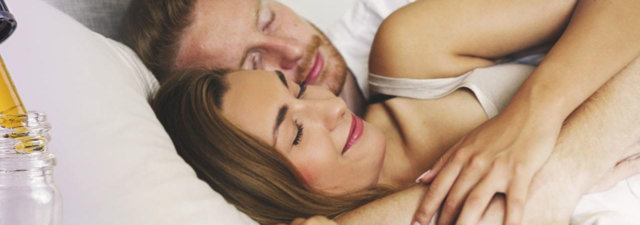Salves, oils, tinctures, creams, butters, balms, lotions, and moisturizers. In the world of CBD, there are endless terminologies. What is a salve, and what’s the difference between a CBD salve and a CBD oil, or the difference between a salve and a cream?
These are honest and valid questions. We understand the confusion surrounding topical cannabis options and understand that the bevy of products available both online and in dispensaries can be overwhelming.
In this article, we explain everything you need to know about CBD salves. We talk about what they’re used for, how they’re made, and the conditions people use them for. We also explore how salves differ from other CBD products like oils and creams.
What Is a CBD Salve?
In the general sense of function, there is no real distinguishing between a salve, a balm, and an ointment. One can use all three terms more or less interchangeably.

The Miller-Keane Encyclopedia and Dictionary of Medicine, Nursing, and Allied Health officially defines an ointment as: “a semisolid preparation for external application to the skin or mucous membranes … [that] consists of medicinal substances incorporated in suitable vehicles. (Called also salves and unguents).”
In less clinical, easier-to-understand terms, a salve (or balm or ointment) is a medicine-infused concoction wherein one applies the medicine (in this case CBD) directly to the skin.
Salves are typically made with a fatty base such as beeswax, coconut oil, or Candelilla wax.
Regarding CBD creams and CBD lotions, the only real difference between them and salves/balms/ointments is that creams and lotions use water and moisturizing agents in their bases. Salves and balms only use fatty oils and wax as a base, with no water.
This accounts for a difference in texture more than anything else. The real functional differences, which we’ll talk about in just a moment, lie more in the specific ingredients used and the amount of CBD present in the salve.
CBD Salves: How Are They Made?
Salves are simple concoctions, even though companies can make them with various ingredients. Go online, and you’ll find dozens of ‘DIY CBD salve’ instructions. Most of them, though, are similar in that they include the following three ingredients:
- A natural wax (most commonly beeswax)
- A fatty oil base (this is the “vehicle” responsible for carrying the medicine)
- A medicinal or therapeutic compound
For the wax portion of the base, natural (non-enriched) beeswax is a common choice. If you’ve never handled beeswax before, it’s a sticky, dense, hard material that one must melt down to garner usability.
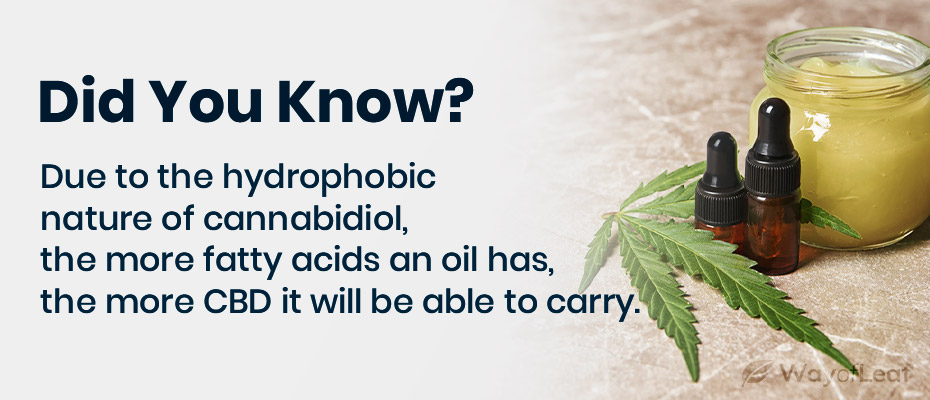
Vegetable waxes like Candelilla wax (which comes from the leaves of the Mexico-native Candelilla plant) also work well. However, Candelilla is mostly for vegan salves. Generally, pure beeswax is the better option.
Why Are Oils Used in CBD Salves?
The oil portion of the base is the part that’s responsible for “carrying” the medicine in the salve. Several different oils are effective for making CBD salves, but many consider coconut oil the best option. This is due to its high content of fatty acids. Fatty acids are the molecular devices responsible for carrying the CBD compound.
Generally, the more fatty acids an oil has, the more CBD it can carry. Fortunately, there are other options if you’re sensitive to coconut oil.
To infuse the oil with CBD, a cannabis plant is ground into fine particles. The ground flower is then steeped for several hours at 200+ degrees Fahrenheit in the oil. The heat decarboxylates the cannabidiol into its active molecular form. This is the point at which the fatty acids in the oil latch onto the CBD.
After the heating process, the oil is mixed with melted-down wax to create the topical CBD salve. Other essential oils, like lavender and peppermint, are often added as well. Manufacturers can add fat-soluble vitamins such as vitamins E, A, and D too.
Check the label!
Any good CBD salve will have a full list of ingredients on the tub it comes in. When browsing for options, keep an eye out for the wax used, the oil base, and other ingredients.
If you’re unsure where the CBD comes from, contact the manufacturer. Most brands use hemp as the cannabidiol source (industrial hemp is legal and contains CBD), but others use marijuana strains with a higher THC content. These are illegal in some parts of the U.S. without a medical marijuana card.
Why Use a CBD Salve?
The primary reason for applying CBD in this way is to combat aches and pains in the body. Most people use topical CBD products for musculoskeletal complaints such as carpal tunnel syndrome, arthritis, or tendinitis.
A study in the European Journal of Pain in 2016 looked at the effect of CBD gel on rats. The researchers found that doses of 6.2mg and 62.3mg of CBD a day effectively reduced joint swelling and limb posture scores. However, this research looked at transdermal CBD, which has a more detailed effect than standard CBD salves.
A study published in Current Pharmaceutical Biotechnology in 2020 found that CBD could help reduce pain for peripheral neuropathy patients. Peripheral neuropathy is nerve damage with symptoms such as weakening in the hands and feet and numbness.
Meanwhile, a study published in the Journal of Clinical Medicine in 2019 showed that transdermal CBD improved the condition of patients with temporomandibular disorder (TMD). TMD can cause stiffening and pain in an individual’s jaw.
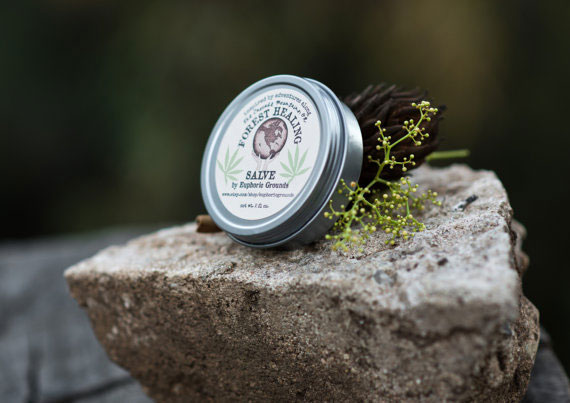
Photo Credit: Euphoric Grounds
The American Academy of Dermatology Association (AAD) suggests that CBD’s anti-inflammatory properties could help with common skin conditions like acne or psoriasis.
Moreover, there is little evidence of adverse side effects. While the AAD acknowledges that CBD creams could cause contact dermatitis, it is a possible side effect with almost any topical cream, not just CBD products.
Individuals with skin conditions or body pain find that CBD salve can provide a faster effect than orally consumed products. This is due to how such products function.
How Does a CBD Salve Work?
In general, CBD works by activating the body’s endocannabinoid system (ECS), which impacts many important functions in the body. The ECS consists of cannabinoid receptors (CB1 and CB2) present on the surface of cells. CB receptors are available throughout the body and are associated with:
- Appetite
- Mood
- Pain sensation
- Immune function
The chemicals produced by the body that interact with the ECS are called endocannabinoids. Like CBD and THC, they interact with CB receptors. There is a high concentration of CB receptors on the skin.
The skin is an incredibly active and functional organ – it’s the largest in the human body. While it is a barrier to potentially harmful substances, it also acts as a useful molecular passageway. It is quick, for instance, to absorb lipid-based oils (such as the ones that comprise CBD salves).
When you apply a CBD salve topically, the lipids in the oil base transport phytochemicals across skin cell membranes. At this point, the CBD can initiate its physiological mechanisms on surrounding cell and tissue layers. Rather than masking pain or inflammation, a CBD salve could ensure pain goes away for a certain period.
This is why salves are a good choice for things like joint pain and skin-specific conditions. The CBD activity directly targets acute regions and gets to work at the source of pain or discomfort.
Nonetheless, users should note that CBD salves don’t spread to deeper tissues and the bloodstream. Therefore, they are best used if you have surface-level pain symptoms. Those seeking relief from aches and pains deeper in the body should look into transdermal CBD products such as patches.
Absorption Rate
There is also the question of bioavailability, the amount of a drug that has a potential therapeutic effect. Orally consumed CBD must go through the digestive system and is subject to the ‘first pass’ effect. This is a phenomenon where a drug gets metabolized at a certain location in the body, resulting in a far lower absorption rate.
Estimates vary but orally consumed CBD’s bioavailability rate is somewhere between 6% and 20%. This means that if someone consumes 100mg of CBD oil, a maximum of 20mg affects the body.
The bioavailability of CBD topicals is unknown. However, since cannabinoids only need to penetrate the skin, they could provide a greater absorption rate than their orally consumed counterparts.
How to Choose a Cannabidiol Salve
When choosing the right CBD salve, we recommend paying close attention to the following factors.
CBD Concentration
Look at the amount of CBD in a container of salve, not to mention the level of CBD per ml. The CBD concentration of salves can vary significantly, so don’t lose out by choosing a weaker option. For instance, CBDfx now has a topical with 60mg of cannabidiol per ml of cream.
Third-Party Lab Testing
Don’t purchase any product that lacks a certificate of analysis (COA). Without a COA, you have no idea whether the product contains the CBD content claimed on the label. These third-party lab reports should also prove the absence of THC, pesticides, insecticides, heavy metals, and other toxins.
Ingredients
Always opt for organic ingredients and stay away from any CBD salves containing things you’ve never heard of! The best topicals tend to have shea butter, aloe vera, and other high-quality moisturizing ingredients found in standard skin creams.
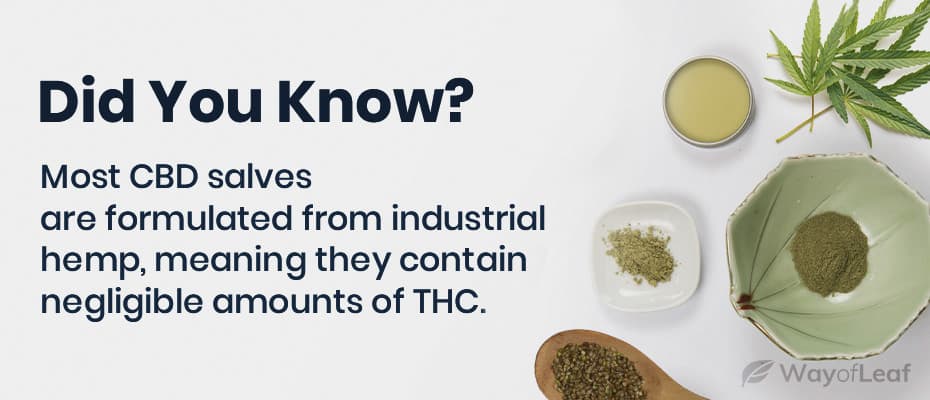
Type of CBD
Does the salve use full-spectrum, broad-spectrum, or isolate CBD? Isolate products contain nothing but cannabidiol. Full-spectrum CBD contains an array of cannabinoids and terpenes. It is believed to provide more benefits due to the entourage effect. This phenomenon suggests that cannabinoids work better together than in isolation. The main difference between full-spectrum and broad-spectrum is that the latter contains practically 0% THC.
Quality Control
- What do you know about the brand?
- Where does it source its hemp?
- Is the hemp non-GMO?
- How does the brand extract its cannabinoid?
These are some of the questions you need to address before parting with your money. Ideally, you will buy CBD salves from top-rated brands that use hemp cultivated in licensed American or EU farms. They will use organic hemp with a maximum of 0.3% THC and solventless CO2 extraction.
Final Thoughts on CBD Salves
While CBD salves work well for many individuals, they don’t have the same effect on everyone. It’s important to do your own research, try out different products, and explore various natural ingredients to find a salve that’s suitable for you and your needs.
Be wary of the specific product you’re buying if or when you decide to try a CBD salve or other topical CBD product. While there are some very well-made products out there, there are plenty of poor-quality ones as well.
The FDA has issued warning letters to several companies for manufacturing CBD products with inaccurately labeled bottles. As Dr. Adam Friedman (Assistant Professor of Dermatology at George Washington University) puts it, “Cannabinoids haven’t really emerged [yet] within mainstream dermatology, but there’s going to be an exponential increase in the [amount of] attention paid to them.”
Do your homework, spend some time researching quality brands, and read plenty of reviews (like those below) before you go and buy CBD salve – whether it’s online or in a store.

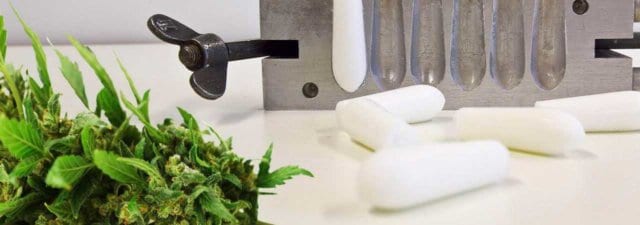

![What in the World Is PHO Wax? [Cannabis Concentrate]](https://wayofleaf.com/wp-content/uploads/2019/06/what-is-pho-wax-640x225.jpg)
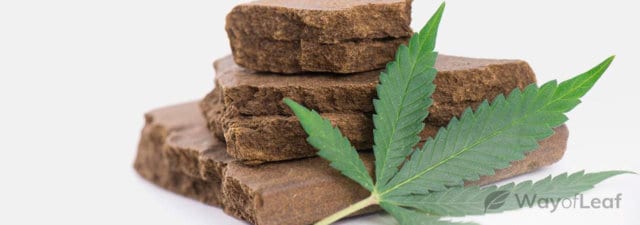
![What Are Dabs? [Your Complete Guide]](https://wayofleaf.com/wp-content/uploads/2019/01/mj_what-are-dabs-640x225.jpg)

![Moon Rocks: What Are They and How Do You Smoke Them? [Answered]](https://wayofleaf.com/wp-content/uploads/2018/06/mj_moon-rocks_1920-640x225.jpg)

